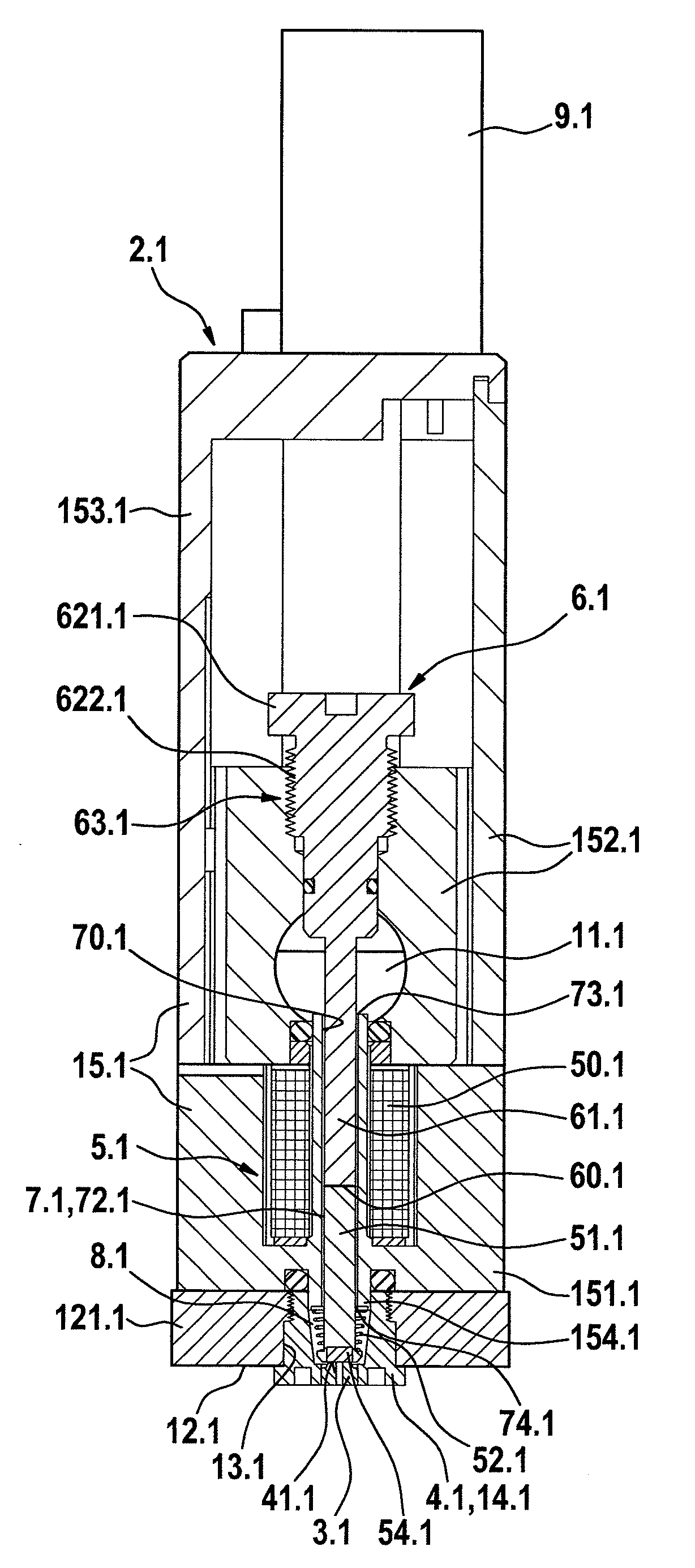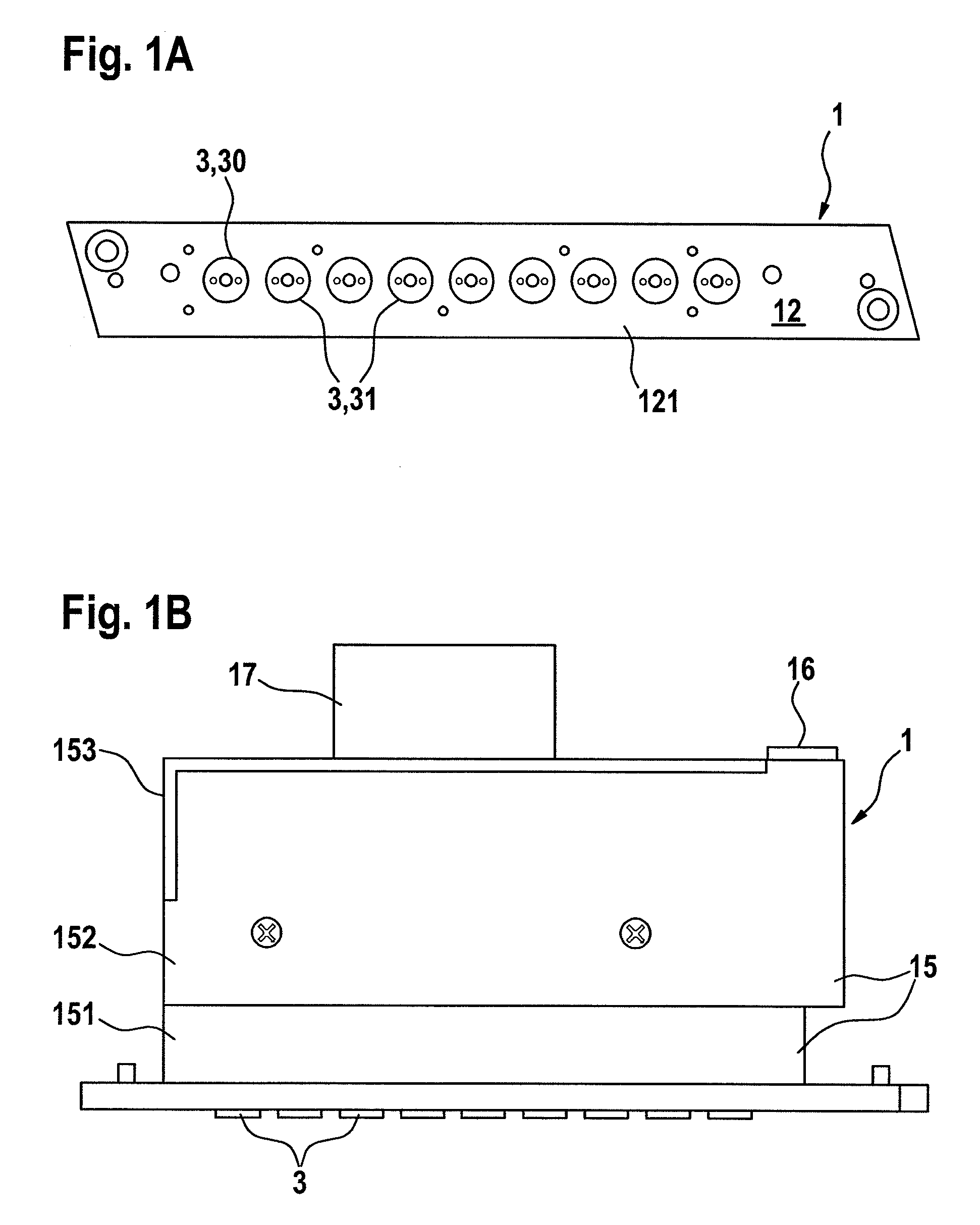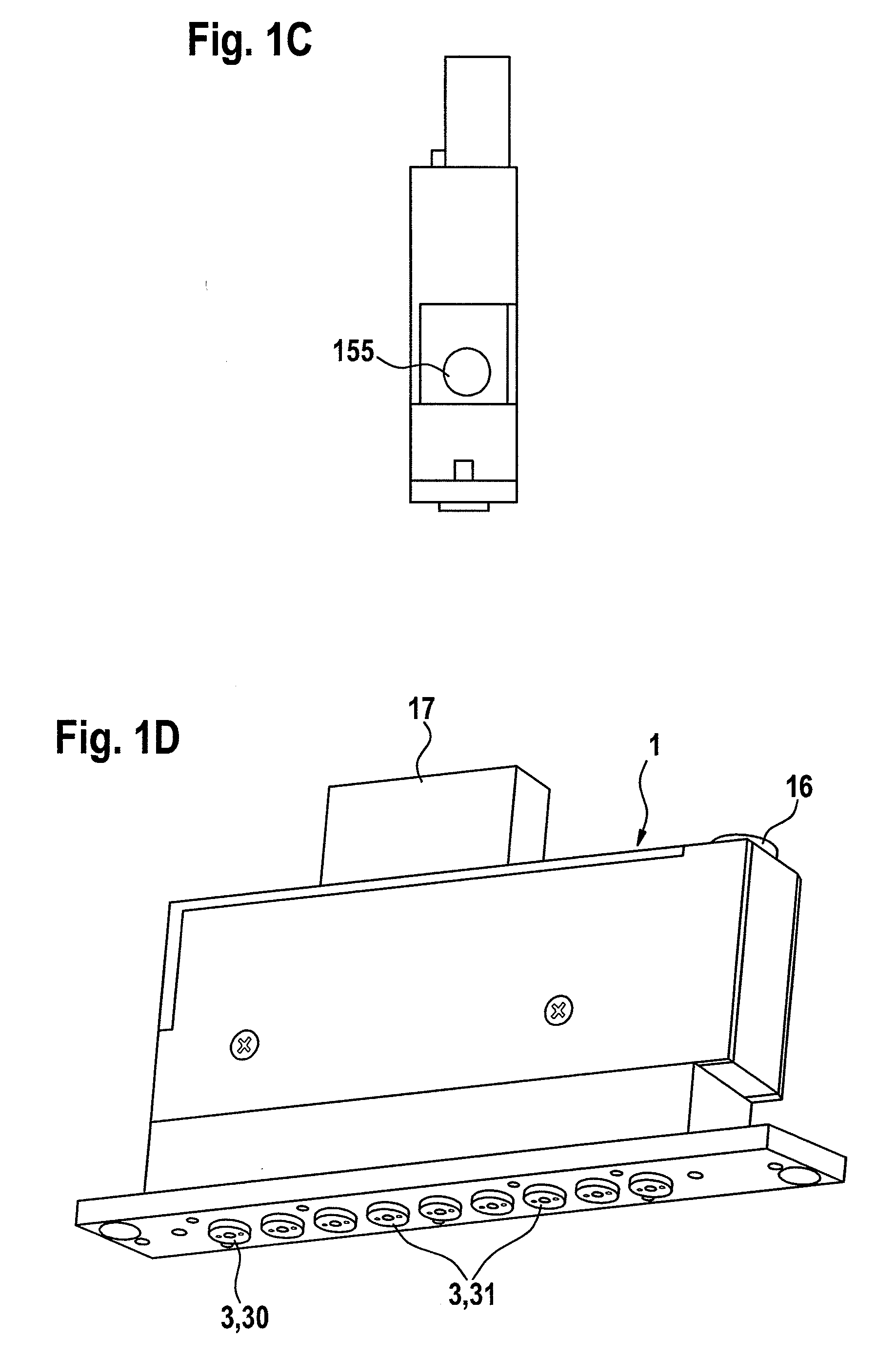Valve device of an application device for applying fluid to a substrate, and applicator
a technology of fluid application device and valve device, which is applied in the direction of valve housing, liquid transfer device, instruments, etc., can solve the problems of requiring considerable adjustment with separate micrometric measuring devices, affecting the accuracy of application, etc., to achieve the effect of easy removal, precise adjustment and sensitive to damag
- Summary
- Abstract
- Description
- Claims
- Application Information
AI Technical Summary
Benefits of technology
Problems solved by technology
Method used
Image
Examples
Embodiment Construction
[0022]An application device according to the invention shown in FIGS. 1A to D comprises a box-like valve body 15 as a component of valve devices 2. The valve body is composed of a lower socket portion 151 and an upper cover portion 152. The lower portion 151 is closed by a narrow elongate nozzle plate 121 which receives valve nozzles 3 in a particular embodiment according to the invention. The valve nozzles 3 are arranged in a straight row on the nozzle / application side 12. On the opposite side, the application device 1 has an electrical plug-in connection 17 and a connecting opening 16 for application fluid. In the practical example the row of valve nozzles 3 is defined by eight application valve nozzles 31 and one cleaning valve nozzle 30 which closes the row of nozzles. The cleaning valve nozzle 30 is arranged at the end of the row of nozzles opposite the connecting opening 16.
[0023]As can be seen from the sectional view in FIG. 2, the valve body 15 is connected to an electronic ...
PUM
 Login to View More
Login to View More Abstract
Description
Claims
Application Information
 Login to View More
Login to View More - R&D
- Intellectual Property
- Life Sciences
- Materials
- Tech Scout
- Unparalleled Data Quality
- Higher Quality Content
- 60% Fewer Hallucinations
Browse by: Latest US Patents, China's latest patents, Technical Efficacy Thesaurus, Application Domain, Technology Topic, Popular Technical Reports.
© 2025 PatSnap. All rights reserved.Legal|Privacy policy|Modern Slavery Act Transparency Statement|Sitemap|About US| Contact US: help@patsnap.com



